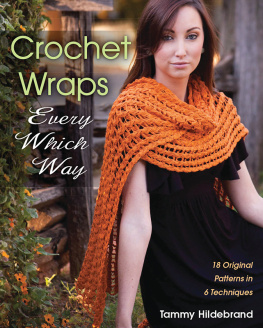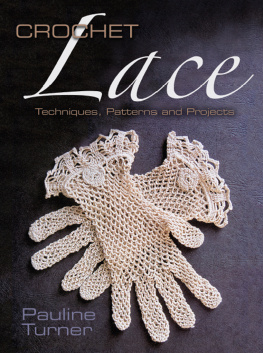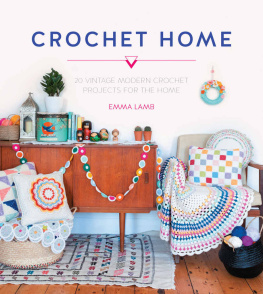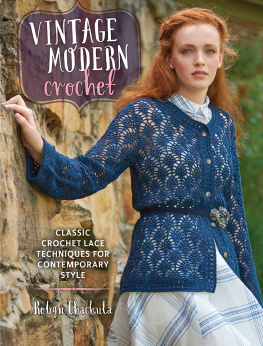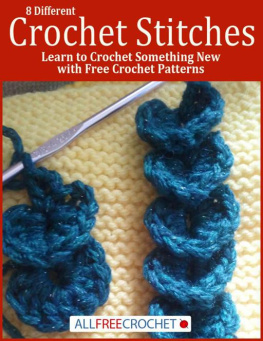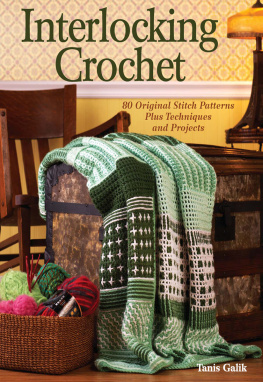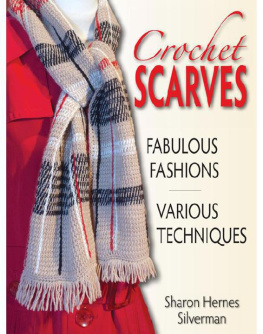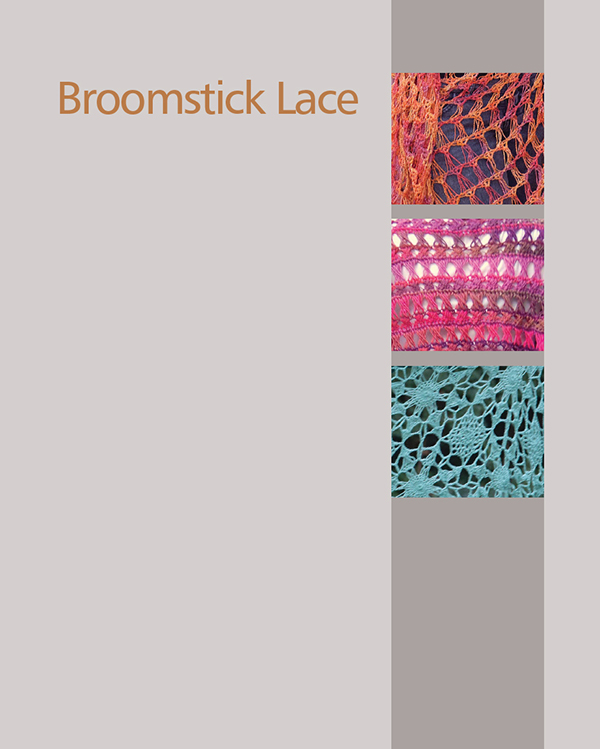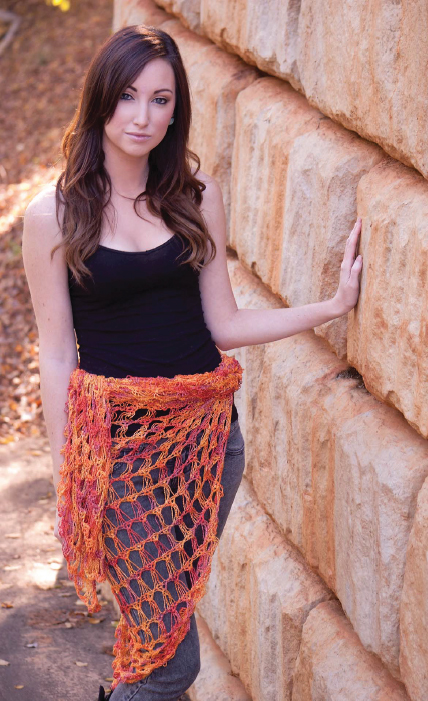Beg | begin/beginning |
Ch | chain |
Ch-sp | chain space |
Cm | centimeter(s |
Dc | double crochet |
Hdc | half double crochet |
Rnd(s) | round(s) |
RS | right side |
Sc | single crochet |
Sl st | slip stitch |
Sp(s) | space(s) |
St(s) | stitch(es) |
Tr | treble crochet |
Yd(s) | yard(s) |
Yo | yarn over |
* | repeat instructions following asterisk as directed |
( ) | work stitches in same st or sp |
[ ] | work bracketed instructions specified number of times |
I am sure everyone has heard the old proverb, It takes a village to raise a child. The same is true when creating a book. I am so grateful to all the people that contributed in one form or another.
All of the gorgeous yarns and tools used in this book were generously donated. I am so thankful for each and every one of you: Bernat, Berroco Inc., Cascade Yarns, Coats and Clark, Garn Studio Drops, Interlacements, Jenkins Yarn Tools, Jenny King Designs, Knit Picks, Kollage Yarns, Lion Brand Yarn, Louet North America, and Westing Bridge LLC.
Thank you also to:
Amy Shelton, for your copywriting assistance.
Angelica Soto, for your impeccable stitching of many of the models.
Brenda Bourg, for your proofreading, and cheerleading.
Chelsea Hildebrand, for your willingness to fill in for modeling.
Elizabeth Chalker, for your inspiration and support.
Gail Crooks, my second-grade teacher, for teaching me how to crochet so many years ago!
Ellen Gormley, for your wisdom and advice.
Jennifer Hansen, who taught me how to do broomstick and hairpin lace, for your influence and support in so many ways.
Kim Guzman, who has taught me so much about Tunisian and double-ended crochet, for your descriptive teaching and your willingness to always help.
Kj Hay, for being the most amazing technical editor that ever walked the earth.
Lisa Johnson, for your wonderful styling and all the laughs.
Rachel Greiser, for your styled photography and your willingness to try anything!
Sharon Silverman, for your inspiration and for opening new doors to me.
Shelby Hildebrand, for your step-by-step photography. Im very proud of you.
Sierra Johnson, for your gorgeous modeling and for never complaining while sweltering in angora or freezing in silk.
The Crochet Guild of America, for playing such a large role in my path to success.
The Musketeers: Vashti Braha, Doris Chan, Marty Miller, Diane Moyer. We sure have come a long way from that conference so many years ago.
I would like to thank everyone at Stackpole Books, especially Mark and Kathryn. I truly appreciate your faith in me and my vision. You have been a joy to work with.
I would also like to thank you, my readers! Without your enthusiasm for my designs I wouldnt be able to do what I do. I am very grateful for your support.
I am so thankful for my fabulous family that I sorely neglected while working on this book. Thank you for picking up my slack so I could work: George, my wonderful husband; Chelsea and Shelby, my beautiful daughters; and Willow, my perfect granddaughter. I also appreciate the support of my mother, Darlene, and my stepfather, Tony.
My greatest gratitude goes to God for this amazing talent He has given me and the opportunities He has presented in my life. I am very blessed.

B roomstick lace dates back to the nineteenth century, probably originating in Europe. It has also been called jiffy lace, peacock eye crochet, witchcraft lace, and lattice loop (in Sweden). Its most common name comes from the fact that it was originally worked on the end of a broomstick. The larger the broomstick (or knitting needle, today), the more open and lacy the fabric will be. For a denser, more closely woven fabric, use a smaller knitting needle. A number of different knitting needles work well for broomstick lacelightweight plastic needles, hand-carved wooden needles, and circular needles (which are two needle tips joined by a flexible plastic cable). Use whatever works best for you and the project you are working on.
Broomstick lace is made in two passes. In the first pass, loops are picked up across a row of crochet and placed on the broomstick needle. In the second pass, the loops are grouped and worked off of the needle. See for a step-by-step broomstick lace tutorial.
V ibrant shades of orange swirl and dance in this shimmery shawl. Very simple increases create a triangle shape that can be worn as a traditional shawl, folded over to wear as a scarf, wrapped around the neck as a cowl, or even clasped around the waist as a sarong!
FINISHED SIZE
51 in./129.5 cm across by 91 in./231 cm long
YARN
Interlacements Rick Rack; (16 oz/454 g, 1200 yd./ 1097 m) hank:
1 hank Soliel
CROCHET HOOK
US H-8 (5mm) or size needed to obtain gauge.
US-50 (25mm) knitting needle (for broomstick lace)
ADDITIONAL MATERIALS
Yarn needle
GAUGE
3 shells in pattern = 4 in./10 cm; 4 rows = 3 in./ 7.5 cm
Special Stitches
Beg-inc sh (Beginning increase shell): Holding loops together as one, insert hook under first 3 loops, yarn over and loosely pull up loop, ch 3 (counts as dc), 5 dc in same set of 3 loops, sliding loops off needle.
Inc sh (Increase shell): Holding loops together as one, 6 dc in indicated set of 3 loops, sliding loops off needle.
Sh (Shell): Holding loops together as one, 3 dc in indicated set of 3 loops, sliding loops off needle.
NOTE Broomstick lace is worked with the RS facing at all times. Do not turn at end of broomstick lace rows.

